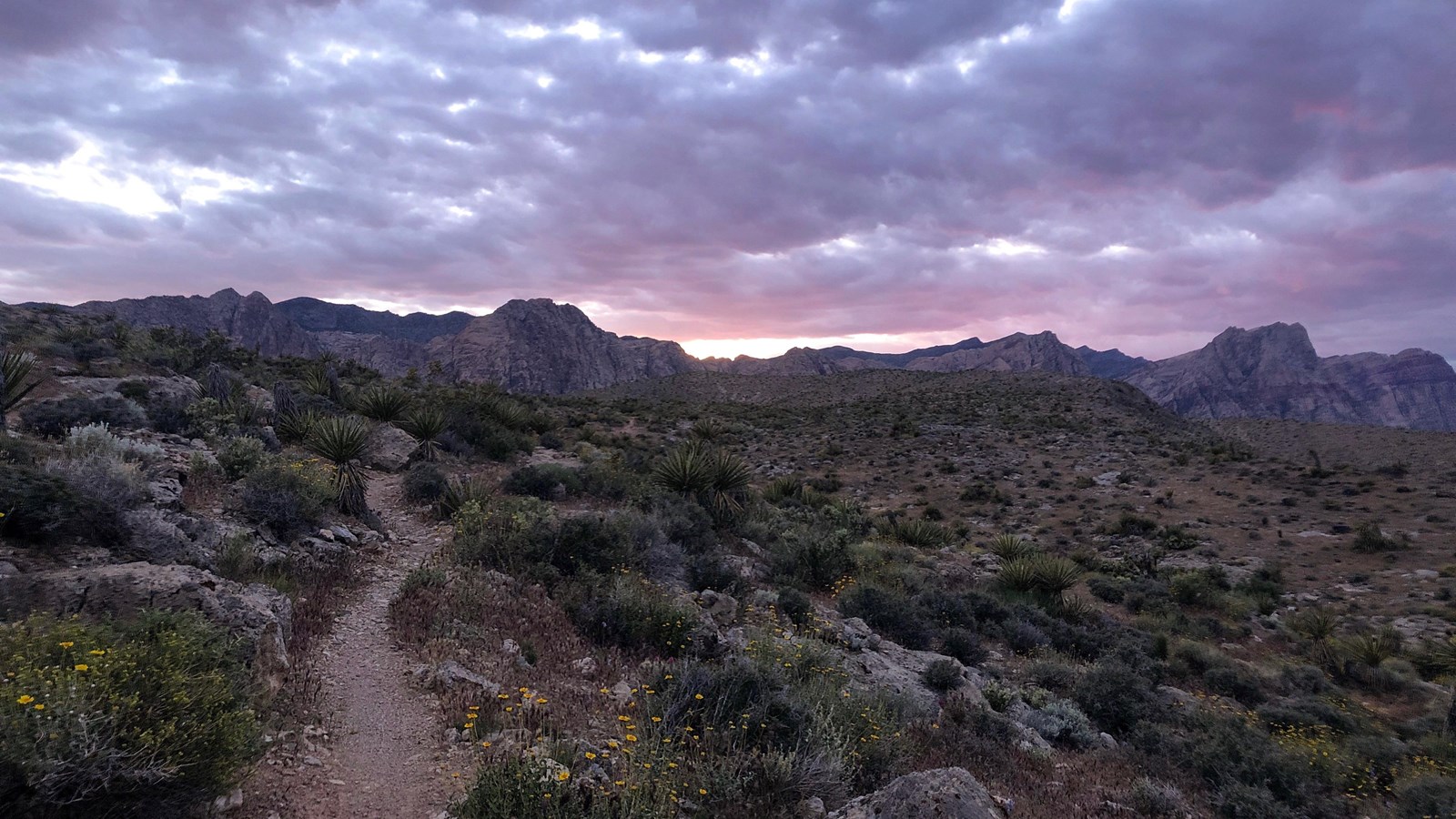Last updated: May 20, 2024
Place
Old Spanish National Historic Trail

Photo/C.Fox
There was money to be made in transporting serapes and other woolen goods from New Mexico to Los Angeles and in wrangling California-bred horses and mules back to Santa Fe. There was likewise a strong economic incentive to move contraband goods and Indian slaves, over this same route. A viable overland route had to be found, though, to cross the remote deserts and mountains of Mexico’s far northern frontier.
In 1776, during the Spanish period, priests Francisco Atanasio Dominguez and Silvestre Velez de Escalante left Santa Fe and explored far and wide through northern New Mexico, western Colorado, and southern Utah. Much of this county would later be part of the Old Spanish Trail. During this same time period, Franciscan priests, the Spanish military, and civilian explorers were beginning to settle various coastal valleys in Alta California. No one, however, made the trek connecting California and New Mexico.
It took the vision and courage of Mexican trader Antonio Armijo to lead the first commercial caravan from Abiquiú, New Mexico to Los Angeles in late 1829. Following suit over the next twenty years, Mexican and American traders continued to use routes similar to the one he pioneered, frequently trading with Indian tribes along the way. It was from a combination of the indigenous footpaths, early trade and exploration routes, and horse and mule routes that the trail network known collectively as the “Old Spanish Trail” evolved. (The name was a term rooted in John C. Frémont’s report of his 1844 journey over the trail for the U.S. Topographical Corps., guided by Kit Carson. While the name acknowledges the fact that parts of the trail had been known to the Spanish since the 16th century, the 700-mile trail was not established until the Mexican period.) Many prominent members of both New Mexican and Californio families traversed this route as part of annual caravans. In one celebrated, well-documented instance, two toddlers made the trip while packed into the mules’ saddlebags.
Thanks in part to the Old Spanish Trail, Santa Fe emerged as the hub of the overland continental trade network linking Mexico and United States markets—a network that included not only this trail, but also the Santa Fe Trail and El Camino Real de Tierra Adentro. After the United States took control of the Southwest in 1848, other routes to California emerged, a wagon route was opened to southern California, and use of the Old Spanish Trail sharply declined.
More Information
